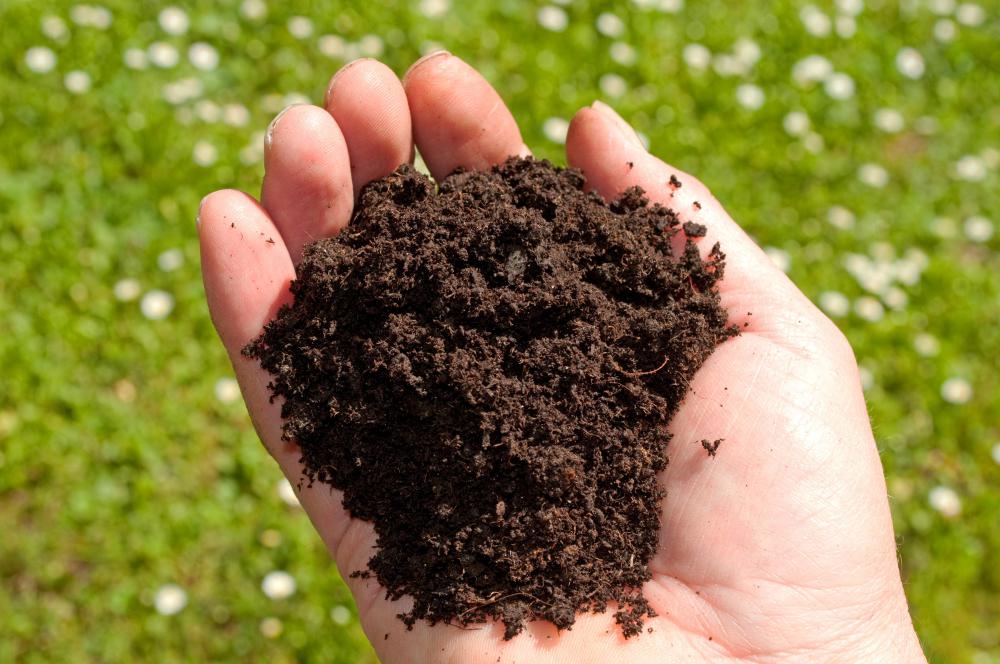At WiseGEEK, we're committed to delivering accurate, trustworthy information. Our expert-authored content is rigorously fact-checked and sourced from credible authorities. Discover how we uphold the highest standards in providing you with reliable knowledge.
What is Acid Soil?
Acid soil is soil which has a low pH, indicating that it is on the acidic side of neutral. Gardeners can determine soil pH with home testing kits, or by sending samples to labs which service gardeners, and determinations of soil acidity are a very important part of gardening, because plants respond to changes in soil acidity or alkalinity. Some plants prefer acid soil, while others like a more neutral or alkaline environment, and soil conditions can be an important limitation to think about when gardening.
Soil pH tends to range between five and eight, with five being very acidic for soil. A number of things can influence the balance of the soil, including the compounds present in the soil and amendments added by a gardener, ranging from sand to fertilizer. It is possible to deliberately adjust the pH level of soil to meet the needs of specific plants.

Plants which thrive in acid soil need acidic conditions to live. If they are grown in neutral or alkaline soils, they may not be able to access the nutrients they need. As a result, they will fail to thrive. They may be more prone to developing diseases and infections, in addition to being listless and slow to grow, and the plants may eventually die because the conditions are not optimal. When transplanted to areas with acidic soil, these plants will generally perk up and begin to flourish.

When plants which prefer alkaline or neutral soil are grown in acid soil, they also fail to thrive. The nutrients they need are inaccessible because of the composition of the soil, and they can be prone to health problems. Because gardeners may tend to fertilize when plants start to struggle, the fertilizer may compound the problem by “burning” the plant and creating patches of brown and yellow on the leaves and stems.

If soil tests reveal that soil is more acidic than desired, lime can be added to the soil to make it more alkaline. The lime needs to be worked deeply into the soil and the soil will need to be periodically tested to confirm that the pH is stable. Amendments can also be added to make soil more acidic if gardeners need acid soil. Most garden supply stores carry tools for adjusting soil pH, and some also carry testing kits or have information about labs which can perform soil tests.

Gardeners should get into the habit of checking the pH preferences of plants before they grow them, so that they can select plants which will grow in their soil, and grow well with other plants. Mixing acid-loving and alkaline-loving plants will not work out, because the plants have opposing soil needs.
AS FEATURED ON:
AS FEATURED ON:














Discussion Comments
@ anon87733- Wintergreen and Canby grow well in acidic shade, and both look really nice in the fall and winter. They are both good ground cover plants.
Blueberries will grow well in your soil, and they attract lots of birds too. You might also want to consider junipers, which will create a low brush cover. You might be able to plant certain types of roses too, which will add nice color to the hillside.
Finally, maybe a redvein or two. these shrubs can grow to about 30 feet, but they look really nice with their drooping flowers in the spring and scarlet colors in the fall.
@ anon87733- According to the USDA, you live in Zone 4a-3b. Numerous plants grow well in acidic soil in those zones. Manchurian gooseberry (super hardy kiwi fruit) can tolerate acid pH levels as low as 5 and do well in your climate zone. Japanese lilacs will also grow well in acidic soil in your zone, although the pH will need to be a little closer to 6 for them to survive.
You can also plant things like blueberries, and strawberries, which both do well on slopes and in highly acidic soil. Most other fruits, along with melons and squash will grow well on a slope during the summer months, and they will be sweeter in a slightly acidic soil. This may be a good option for the areas a little closer to the birches rather than the pines. Good luck!
We live in the north woods of minnesota - lakeside.
Pine trees and white birch are on the slope to the lake. What can we plant on the slope? We have tried crown vetch, mint, hosta. What to do?
Post your comments